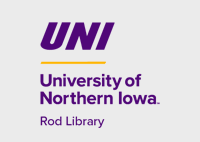Graduate Research Papers
Availability
Open Access Graduate Research Paper
Abstract
Physics is a subject that can be taught is such a way that it can range from a conceptual focus with very little mathematics integration or with a mathematical focus that includes the integration of calculus. At Hempstead High School in Dubuque, Iowa, physics is taught somewhere in the middle with a mathematical focus that includes the integration of algebra. However, many students take physics and pre-calculus in the same year and some were realizing that a couple of main concepts in physics and precalculus were very similar, such as vectors and waves. The problem was that these two classes were teaching the concepts at different points of the year and they were being taught in different ways. The result of these comments was the formation of an interdisciplinary class that weaves the curriculum of physics with that of Pre-Calculus.
In the 2001-2002 the Advanced Physics/Pre-Calculus class was first offered at Hempstead. The class has been team-taught by a physics and pre-calculus instructor. Over the past two years Brian Howes and Eric Sullivan taught the course. However, during the 2003-2004, school year Rita Crotty took over the Pre-Calculus portion. On average about 75 students still take the algebra-based physics class at Hempstead, while about 20 students enroll in the Advanced Physics/Pre-Calculus class. These 20 students are usually honors level juniors preparing themselves to take Advanced Placement (AP) Calculus during their senior year. AP courses are college-level courses for high school students that allow the student to take a test at the end of the year, which, if they score high enough, would give them college credit. Hempstead has a traditional seven period day with each period consisting of 48 minutes. The Advanced Physics/Pre-Calculus class is taught in a back-to-back two-period block consisting of 103 minutes. The curriculum was designed back in the summer of 2001, but the connection between sound waves and interference in physics and the wave theory in pre-calculus is lacking. The lack of connection has led me to developing a high school curriculum unit to integrate these concepts in the Advanced Physics/Pre-Calculus course.
The significance of developing an interdisciplinary unit on sound needs to be described before this unit can be developed. An interdisciplinary unit was chosen to help integrate similar ideas being taught in two different subject areas. The goal of this unit is to show how mathematics concepts can be used to teach science and vice versa. "When connections are extended across curriculum areas, they establish a mental framework that can be recalled for future problem-solving." (Mid-Continent Research for Education and Learning [McREL], 2001, p. 56) A goal of this curriculum is to make the knowledge meaningful. Connecting the concepts·in two subject matters helps to make the information meaningful to the students. Benchmarks for Science Literacy says that interdisciplinary curriculum needs to be designed so the students "see the relationships among science, mathematics, and technology and between them and other human endeavors." (p. 320)
The other key question involves why sound should be taught in physics, and this unit in particular. "Sound and light have been traditional subjects of extensive exploration by secondary students and these topics are still central in the standards-oriented classroom." (National Science Teachers Association [NSTA], 1996, p. 83). Sound is a concept that students experience daily. Many students are familiar with the ideas of sound in terms of loudness and pitch. They can differentiate between loud and quiet, as well as high and low pitch. The real-life relevance involved helps to motivate the students. Both the National Science Education Standards and Benchmarks for Science Literacy include sound as a content standard. Both sources refer to the idea that sound waves are vibrations and involve the transfer of energy. The National Science Education Standards states that "waves, including sound, have energy and can transfer energy." (p. 180) The relationship between sound and energy is an important concept in this unit. Another key concept is interference. "Waves can superpose on one another"
(American Association for the Advancement of Science, 1993, p. 284) is a standard that is incorporated into the concept of interference and superposition. These concepts are then intertwined with the wave theory in pre-calculus. The wave theory involves the various parts of a wave, including amplitude, phase shift, vertical shift, and frequency.
Along with the content standards, the scientific process standards are also addressed in the curriculum unit. The process of science involves how the students learn science as opposed to what they are learning. "Students should use technology and mathematics to improve investigations and communications." (p. 175, NSES, 1996) The integration of technology and mathematics is highly evident in this curriculum unit. Inquiry is another key process standard. The National Science Education Standards defines inquiry as "the activities of students in which they develop knowledge and understanding of scientific ideas, as well as an understanding of how scientists study the natural world." (p. 23) Inquiry is integrated in this curriculum unit by the use of lab activities and discussion. The students are allowed to develop their own understanding of concepts through these activities rather than sitting in a lecture and being told about the concepts.
Year of Submission
2004
Degree Name
Master of Arts
Department
Science Education Program
Date Original
6-2004
Object Description
1 PDF (iii, 65 pages)
Copyright
©2004 Brian Howes
Language
en
File Format
application/pdf
Recommended Citation
Howes, Brian, "Sound Waves: An Interdisciplinary Approach" (2004). Graduate Research Papers. 4561.
https://scholarworks.uni.edu/grp/4561




Comments
If you are the rightful copyright holder of this graduate research paper and wish to have it removed from the Open Access Collection, please submit an email request to scholarworks@uni.edu. Include your name and clearly identify the thesis by full title and author as shown on the work.